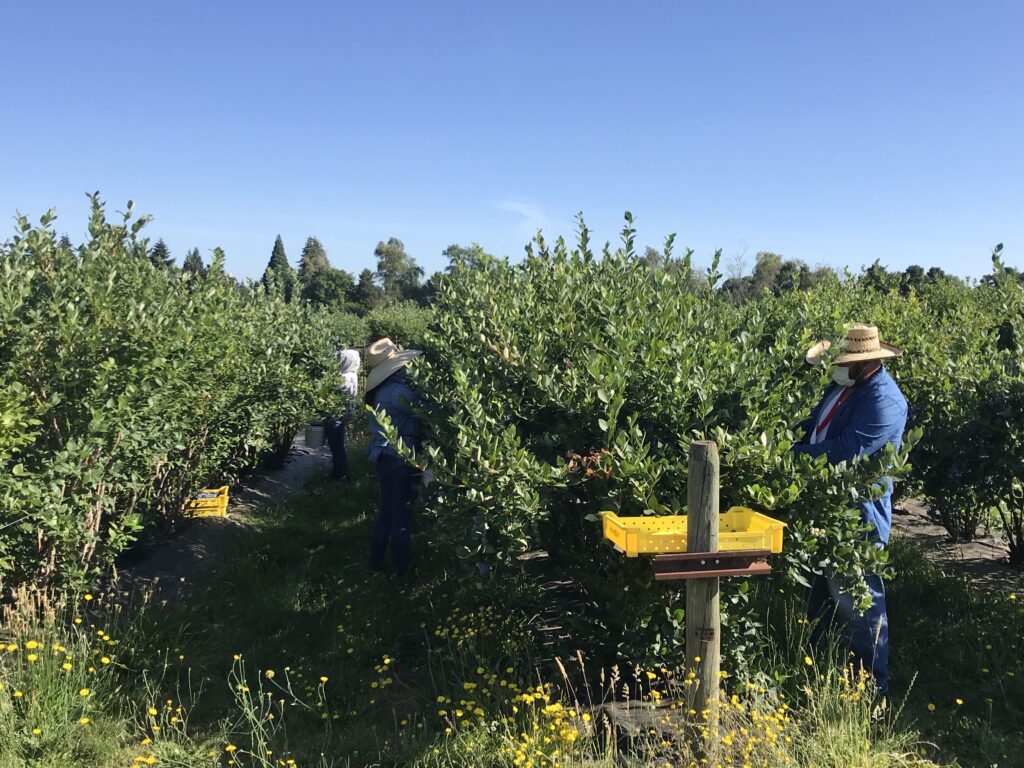Labor shortages became very salient in the United States during the COVID-19 pandemic. However, the agricultural industry has been reckoning with labor shortages and the equity concerns around farm labor conditions for years. One of the primary factors behind both the decline in willing farm labor and the outcry among farmworker advocates has been the inequitable standards for overtime pay and minimum wage in the agricultural industry. Oregon recently became the eighth state to approve overtime pay for agricultural workers, closing a gap in the federal Fair Labor Standards Act (FLSA) that exempted agricultural work from minimum wage, recordkeeping, and child labor standards, along with overtime compensation requirements. There is also growing support for action at the federal level to mandate overtime pay for farmworkers across the country.

The number of farmworkers in the United States has been declining since the early 20th century. However, from 1950 to 1990, these changes were largely due to lower demand for labor, owing to mechanization of agricultural operations. The number of self-employed and family farmworkers declined by 74% over this period, while the number of hired farmworkers decreased by 54%, meaning that the overall proportion of hired workers in the agricultural industry increased. Many of these workers, to this day, are foreign-born, coming mostly from Mexico and Central America. However, today young immigrants are entering the agricultural workforce in lower numbers, meaning that the average age of farmworkers is increasing and laborers are becoming more scarce. One of the clearest signs of this scarcity is the sharp increase in requests for H-2A positions. The H-2A program provides a legal means for farms to bring in foreign-born farmworkers to the United States for temporary employment. Over the past fifteen years, the number of H-2A applications submitted and approved has increased more than fivefold.
House Bill 4002, signed by Governor Kate Brown on April 15, 2022, is the most recent action by a U.S. state to increase compensation for agricultural workers and bring employment standards in line with other industries. HB 4002 will prohibit farmworkers from working over 40 hours a week, unless they are paid for overtime. The law will be phased in over four years. From 2027 onward, the law will take full effect.
House Bill 4002 passed the House with a 37-23 party line vote. It then passed the Senate with 18 Democrats in favor and 9 Republicans opposed. Proponents argue that the bill rights a historical wrong that has resulted in the exploitation of farmworkers and financial strife for their families. They point out that the carveout exempting farmworkers from overtime pay and other protections is a vestige of Jim Crow, since the FLSA, enacted in 1938, incorporated the exemption to gain the support of Southern Democrats.
The Oregon Farm Bureau, which represents 6,700 farms in the state, opposed the bill. The Bureau commissioned a study that indicated that mandating overtime pay would impose an average wage of $26 per hour for overtime compared with the average $17 per hour farmworkers in the state currently receive. The organization cautions that considering the tenuous financial situation of many farms, the bill could cause many of the 10,000 farms in Oregon to close or sell to corporations

Agriculture in Oregon and across the country has become a much less profitable way to make a living over the past several decades. In 2022, the US farm sector debt is projected to increase by $13.05 billion to a record $467.4 billion. Two-thirds of this debt is in the form of real estate, as the prices of arable land have skyrocketed across the country. The US Department of Agriculture expects the debt-to-asset ratio to exceed 14% for 2022, which would be the highest since 2002, indicating that farmers have increased their borrowing. The rate of return on assets has also plunged in the past several years, meaning that farmers are seeing smaller returns on investments made in the cost of production and in assets used to turn out a product. Returns have been incredibly volatile over the past decade, ranging from $58.6 billion to $134.5 billion between 2012 and 2021. Due in large part to the hardship imposed by this constant volatility, farm bankruptcies, particularly among small and mid-size farms, are on the rise. There was a near record number of Chapter 12 farm bankruptcy filings in 2020, with 13 in Oregon.
Though the intense debate around farmworker compensation focuses on the farmers and the farmworkers, there is no clear hero or villain in this story. Both small farmers and farmworkers are victims of a system that was not designed to protect them. The responsibility for the well-being of our agricultural workforce does not fall solely on the shoulders of the farmers. Our food system is a network of actors that all bear responsibility for protecting our producers and their workers. We cannot attack the symptom without addressing the more systemic problem, which is the rising costs and decreasing profitability of farming. If we cannot relieve some of these costs, whether by reforming taxes or introducing new incentives for sustainable practices, we will struggle to protect valuable farmland, preserve diversity in producers, and support farmworker rights.

Shannon Bell, Western Resource Fellow and Research Assistant | Shannon is a Master of Environmental Management candidate at the Yale School of the Environment specializing in environmental policy analysis. She is particularly interested in collaborative policymaking and nature-based climate solutions in the Pacific Northwest, especially in her home state of Oregon. Shannon was inspired to return to the landscape where she was born and raised by both her education in environmental science and climate policy as well as her intimate connection with the diverse forest and highland desert ecosystems. She came to Yale after graduating from the University of British Columbia with a B.S. in Honors Environmental Science. See what Shannon has been up to. | Blog
